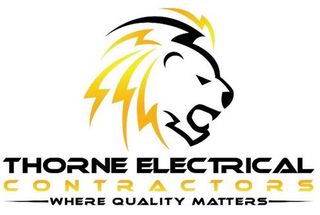Electrical Installation Condition Reports EICR
What is an EICR
All electrical installations, over time, will deteriorate naturally as they are a
working mechanism made up of various components and working systems.
Much like an MOT for cars it is important that you ensure you carry out checks on the condition
of the electrics in your home at regular intervals.
This will help identify any faults or defects which could require improvement and will ensure the
continued operation of the installation in a safe and effective manner.
There are two kinds of checks that can be carried out and we recommend that you always
employ a registered electrician to carry out such checks.
Visual Inspection
A visual inspection is a basic check to identify any visible signs of
defects, damage or deterioration.
No circuit testing will be undertaken, so your electricity will likely
remain on during the inspection.
The electrician will need to be given access to all of the rooms
in your home. The report will typically take around 1 hour to
complete depending on the size of the property.
Notes will be taken by the electrician as part of the visual
inspection and a Visual Inspection Report (VIR) will be issued to the
home owner at the end.
The Visual Inspection report will record a number of observations
and recommendations and provide an overall summary of the
condition of the installation.
Below is a check list of the things you can expect to be looked at
during a visual inspection.
Consumer Unit (main fuse board)
Sockets
Plugs
Light fittings
Light switches
Electrical cables or leads
Earthing and bonding
Extension leads
Kitchen safety
Bathroom safety
Signs of wear and tear
Visible signs of burning/scorching
RCD protection around the home
Electrical Installation Condition Report (EICR)
An electrical installation condition report (EICR) identifies any
damage, deterioration, defects and/or conditions which may give
rise to danger along with observations for which improvement
is recommended.
It is a more detailed report than a VIR and will involve the
testing of various circuits which will require the turning off of the
electrics at the main supply. This allows the contractor to identify
any possible hidden defects or issues that cannot be identified
during a VIR.
The purpose of an EICR (also known as periodic inspection and
testing of an electrical installation), is to determine, so far as is
reasonably practicable, whether the installation is in a satisfactory
condition for continued service.
Homeowners often ask for, or obtain a condition report as part
of a house sale. Similarly, landlords with an increasing awareness
of their electrical safety obligations undertake regular periodic
inspections in relation to their rental properties.
It is generally recommended that an EICR is carried out every
ten years (five for privately rented properties) or when there is a
change of occupancy in a dwelling.
Typically an EICR will take around 3-4 hours to complete,
depending on the size of a property and the number of circuits
requiring testing
What will an EICR tell me?
An EICR will provide a full summary of the condition of the
electrics in your home and determine whether it complies with the
current British Standard for electrical safety (BS 7671).
It will record a number of observations in line with BS 7671 and
make various recommendations where improvement may be
necessary or beneficial to improving safety in your home.
Once the EICR is completed the registered contractor will provide
you with a certificate outlining the overall condition of the
electrical installation.
Generally, an EICR will provide codings against the condition of the
installation. The classification codes are as follows:
Code C1 - This code should indicates that danger exists, requiring
immediate remedial action. The persons using the
installation are at immediate risk.
Code C2 - This code indicates that, whilst an observed deficiency is
not considered to be dangerous at the time of the
inspection, it could become a real and immediate
danger if a fault or other foreseeable event was to occur
in the installation or connected equipment.
Code C3 - This code indicates that, whilst an observed deficiency is
not considered to be a source of immediate or potential
danger, improvement would contribute to a significant
enhancement of the safety of the electrical installation.
You are under no obligation to have any of the issues fixed, though
it is recommended that corrective action to rectify any C1 and C2s
is completed as soon as possible.
I am looking to buy a property and would like to
know the condition of the electrics?
Before purchasing a property it is always worth asking the current
occupier if they have an up-to-date EICR. This will give you an
overview of the current state of the electrics in the property. If they
do not have an EICR you could request that one be carried out with
costs to be agreed between either party.
I am about to move into a rented property but am
worried about the condition of the electrics?
Landlords are required by law to ensure that the electrical
installation in a rented property is safe when tenants move in and
maintained in a safe condition throughout its duration.
If the property is a House in Multiple Occupation (HMO) a periodic
inspection must be carried out every five years.
If the property is not an HMO, a landlord is not legally obliged to do
this (except in Scotland where it became law on December 1, 2015)
However, we recommend that a landlord should have a periodic
inspection and test carried out by a registered electrician on rental
properties at least every five years.
Any appliance provided should also be safe and has at least the CE
marking (which is the manufacturer’s claim that it meets all the
requirements of European law).
To meet these requirements a landlord will need to regularly carry
out basic safety checks to ensure that the electrical installation and
appliances are safe and working
For information on the new PRS legislation regarding mandatory electrical safety tests for rented
properties
Business Hours
- Mon - Sun
- Open 24 hours
Telephone: 07538 346 481
Email:
thorne.electricals@yahoo.com
Address: Thorne Electrical Contractors
47 High Street, Salisbury, SP5 5ND






